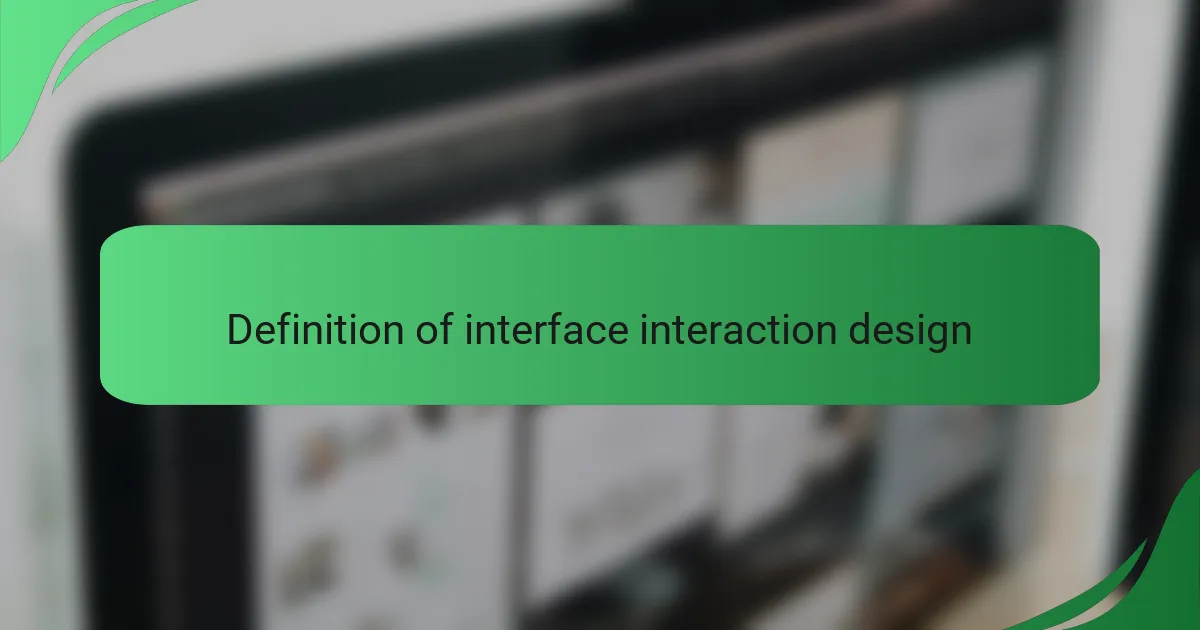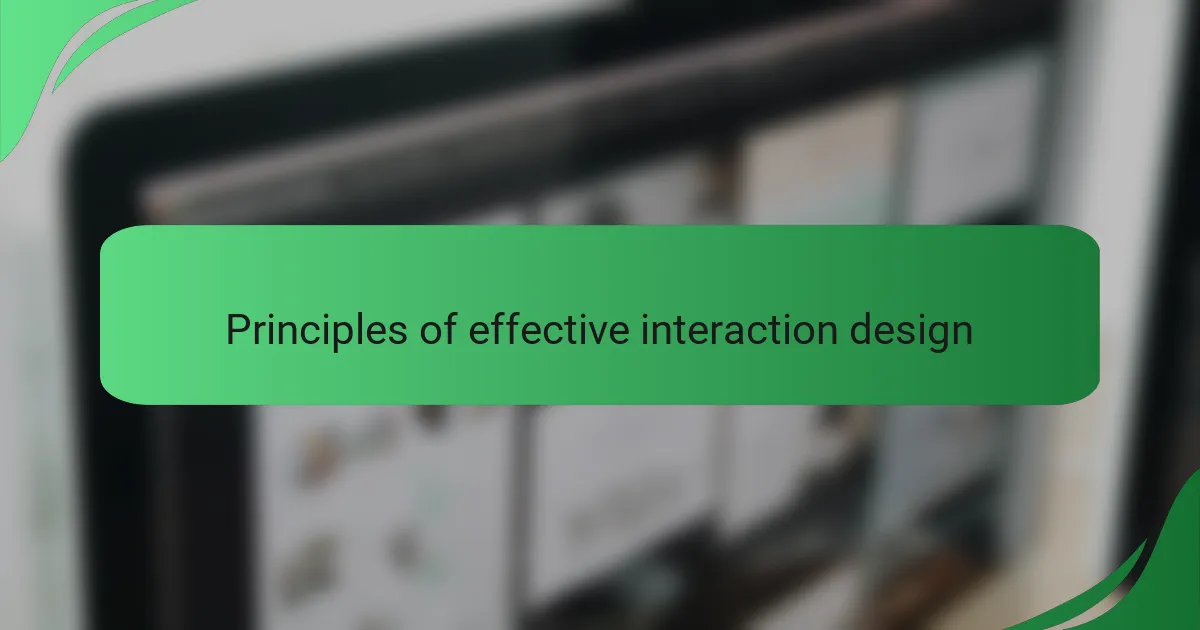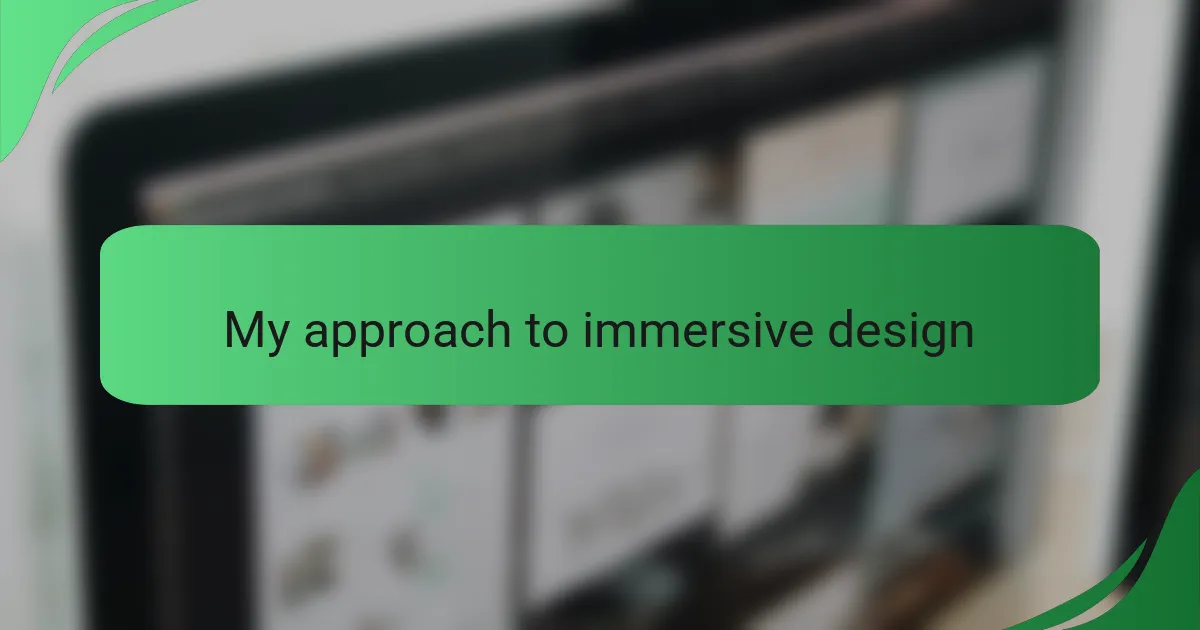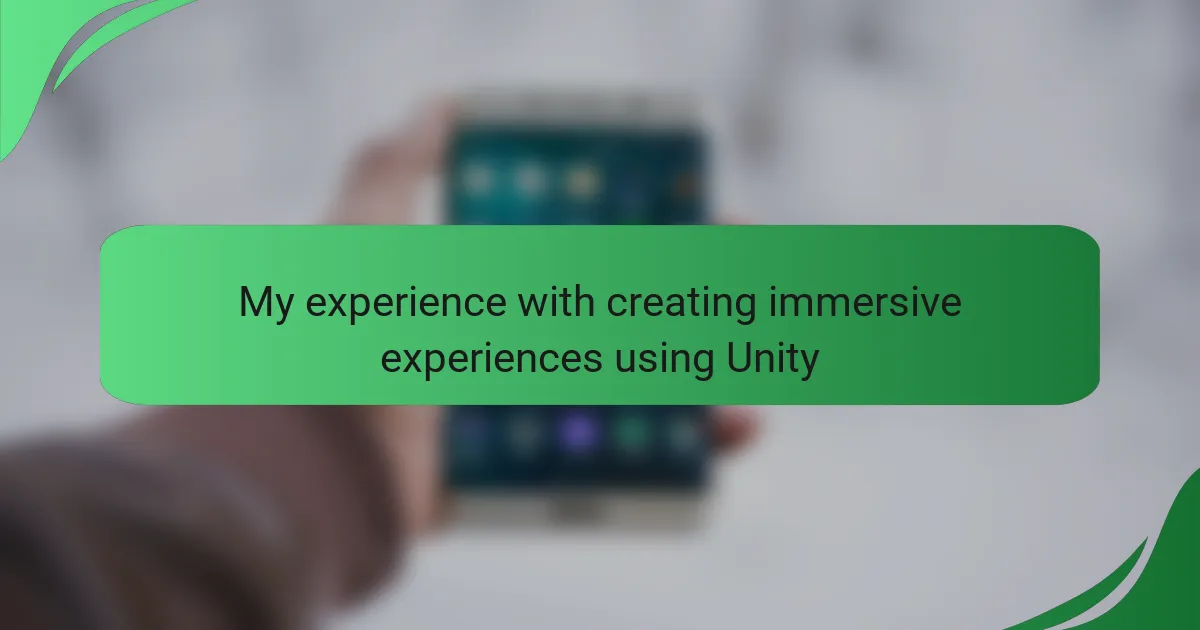Key takeaways
- Interface interaction design enhances user engagement by prioritizing user behavior and creating intuitive experiences.
- Immersive experiences encourage active participation and emotional connections, improving user satisfaction.
- Effective design relies on user feedback, simplicity, and accessibility to create meaningful interactions.
- Challenges in development, such as optimizing performance and user testing, require balancing creativity with technical constraints.

Definition of interface interaction design
Interface interaction design is a field dedicated to enhancing the way users interact with digital products through intuitive and engaging interfaces. It focuses on creating seamless experiences that cater to users’ needs, making technology accessible and enjoyable. My experience in this field has shown me that understanding user behavior is critical to creating an immersive environment.
When I first began exploring interface interaction design, I found that applying principles from my Unity projects significantly improved user engagement. I learned that the visual elements, feedback loops, and interactivity play vital roles. Each detail in design can evoke emotions and shape the user’s journey through an interface.
| Feature | Interface Interaction Design |
|---|---|
| Objective | Create user-friendly experiences |
| Focus | User behavior and engagement |
| Tools | Design software, prototyping tools |
| Outcome | Enhanced satisfaction and usability |

Importance of immersive experiences
Creating immersive experiences is crucial in today’s interactive landscape. They engage users on a deeper level, making them feel like active participants rather than passive observers. From my own experience, I’ve found that these environments can evoke a variety of emotions, drawing users into the narrative and fostering genuine connections with the content.
Think about the last time a game or interactive experience truly captivated you. For me, it was a virtual reality adventure I built using Unity, where every sound and visual detail enhanced the experience, making the world feel alive. This level of engagement isn’t just enjoyable; it can also drive users to explore, learn, and share their experiences with others.
Here’s a comparative look at traditional experiences versus immersive ones:
| Traditional Experiences | Immersive Experiences |
|---|---|
| Passive engagement | Active participation |
| No emotional connection | Deep emotional involvement |
| Limited interaction | Diverse interaction possibilities |

Overview of Unity for design
Unity has truly transformed the way I approach interface interaction design. The platform is incredibly versatile, allowing designers to create not just games, but immersive experiences that can engage users in varied contexts. I remember the first time I pieced together a simple interactive scene; the feeling of watching my design come to life was exhilarating.
What I appreciate about Unity is its user-friendly interface combined with powerful features like real-time rendering and a robust asset store. These tools help streamline the design process, making it easier to focus on creativity rather than technical obstacles. Since integrating Unity into my workflow, I’ve noticed a significant boost in my ability to create engaging, interactive environments.
Here’s a comparison table highlighting some key features of Unity regarding interface interaction design:
| Feature | Description |
|---|---|
| Real-time Rendering | Allows designers to see changes instantly, facilitating quick iterations. |
| Cross-Platform Deployment | Easily deploy projects to multiple platforms, reaching a wider audience. |
| Asset Store | Provides a vast library of ready-to-use assets, saving time on design and development. |

Principles of effective interaction design
Effective interaction design revolves around understanding your users. During my time creating immersive experiences with Unity, I realized that without empathy, designs can fall flat. For instance, I once spent hours perfecting a user interface that I thought was intuitive, only to discover through testing that users struggled with it. This experience taught me the value of user feedback and iterative design.
One of the key principles I embraced was keeping interactions simple and purposeful. When users are overwhelmed by options, they often disengage. I remember integrating a feedback system in a project that allowed users to express their thoughts on the interface. The insights I gained led to a more streamlined experience that truly resonated with users.
Here are some essential principles to consider for effective interaction design:
- User-Centric Design: Prioritize the needs and preferences of the user in every decision.
- Consistency: Maintain uniformity in design elements to build familiarity.
- Feedback: Offer clear, timely responses to user actions to reinforce engagement.
- Simplicity: Strip away unnecessary complexity to enhance usability.
- Accessibility: Ensure the design is usable for people of all abilities and backgrounds.

My approach to immersive design
When I think about my approach to immersive design in Unity, I focus on the user experience as a foundation. I often reflect on a project where I aimed to create an educational environment that felt both engaging and informative. The moment I saw users physically interact with the space, watching their emotions range from curiosity to excitement, I knew I was on the right track.
To create immersive experiences that resonate, I prioritize a few key elements:
- User-Centric Design: Understanding the audience’s needs helps shape the experience meaningfully.
- Sensory Engagement: I incorporate sound, visuals, and interactivity, making the virtual environment feel alive.
- Iterative Testing: I believe in continuous feedback. Each prototype teaches me something new about the users and the experience they desire.
- Storytelling: I weave narratives into the design, as I find people connect emotionally with stories.
- Accessibility: Ensuring that the experience is inclusive empowers a wider audience and enhances engagement.

Challenges faced during development
Developing immersive experiences in Unity has certainly come with its fair share of challenges. One significant hurdle I faced was optimizing performance for different devices. It was eye-opening to see how a scene that ran smoothly on a high-end PC lagged on a mobile device. I often found myself deep in Unity’s profiler, trying to pinpoint the issues. Limiting draw calls and reducing texture sizes became a routine part of my workflow.
Then there’s the unpredictable nature of user interactions. During an early project, I created a complex interface that I thought users would navigate effortlessly. To my surprise, feedback revealed that users were confused by multiple options. It reminded me of the importance of user testing; every design decision needs to be validated by actual users. I learned that simplicity and clarity often outperform complexity, ensuring that users stay engaged rather than frustrated.
Lastly, balancing creativity with technical constraints was another challenge I encountered. I vividly recall a moment when I had a vision for an elaborate interaction, only to realize it would be too demanding on the system. Each compromise felt like a creative sacrifice. I had to shift my mindset, realizing that sometimes the best solutions come from working within limitations rather than fighting against them. Embracing this challenge ultimately shaped my design philosophy towards more innovative, efficient approaches.




